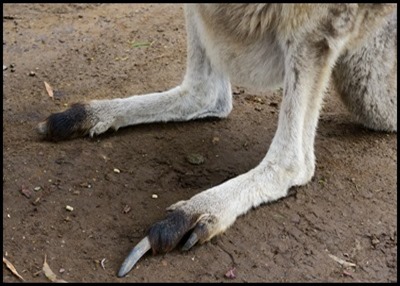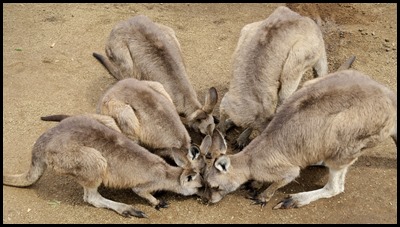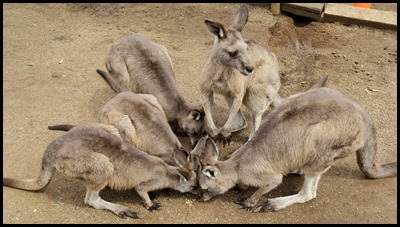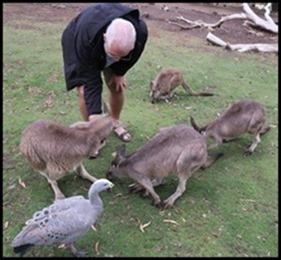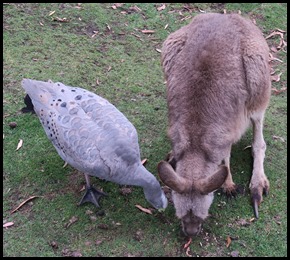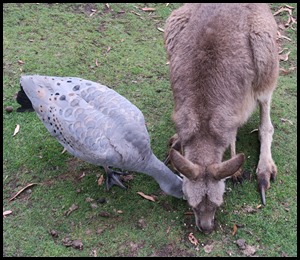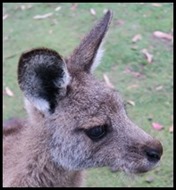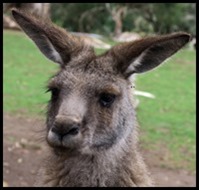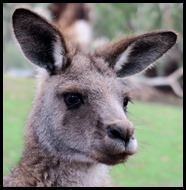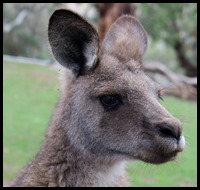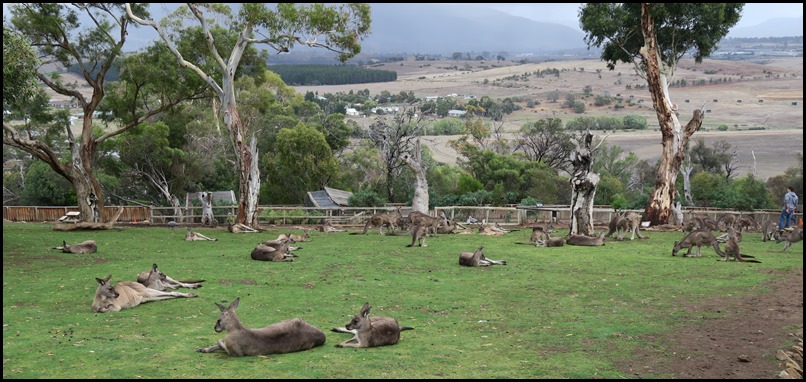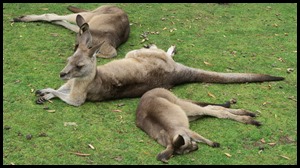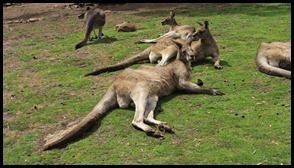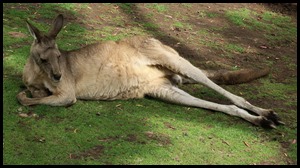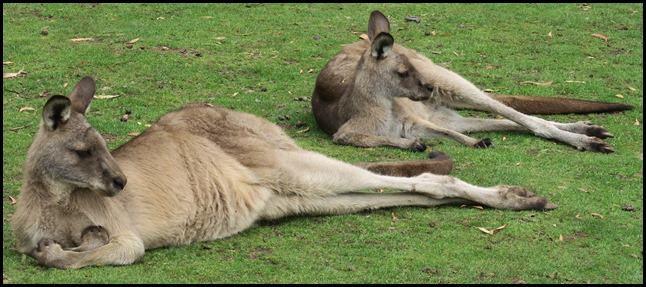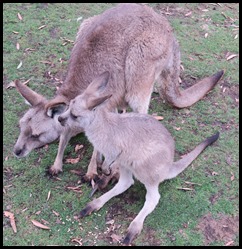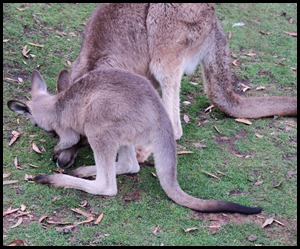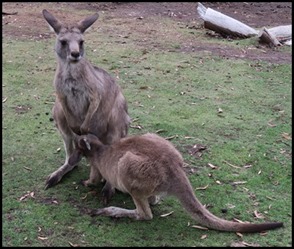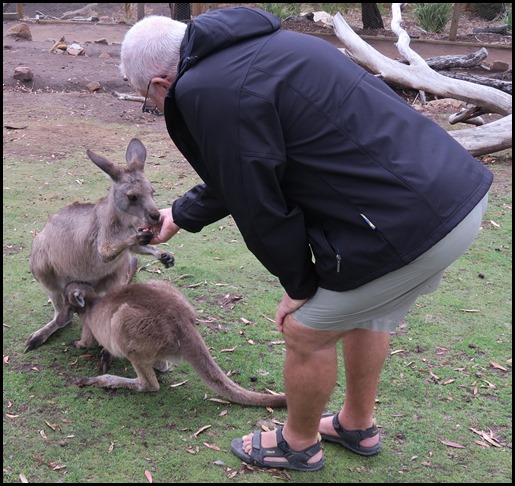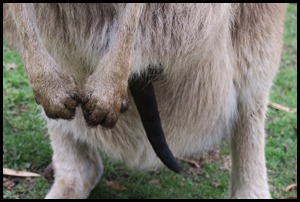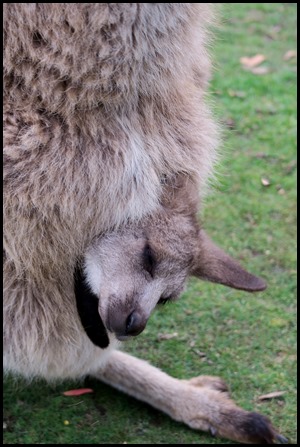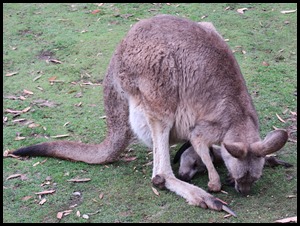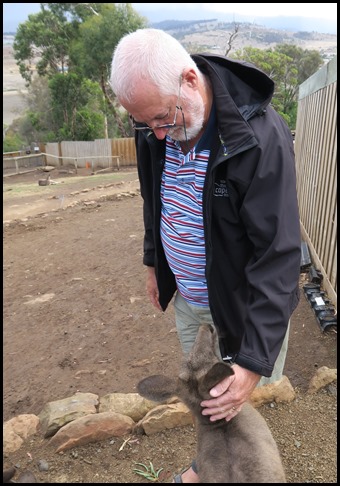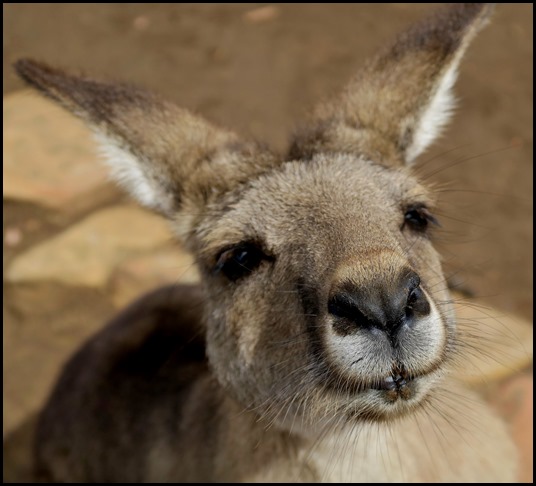Grey Feeding

|
Feeding and Bimbling with the Grey
Kangaroos 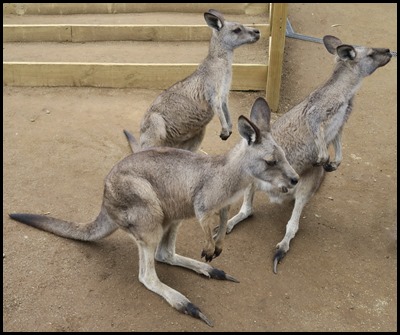 A born and bred Australian ‘bloke’ wrote how he became putty
when he fed the greys at Bonorong, well if a man who has seen kangaroos like we
have seen sparrows, we had to do it. We paid our entry, received our free feed
bag and bought an extra each, walked through the gate and saw our first trio. The first thing that struck us was their
middle toe..... 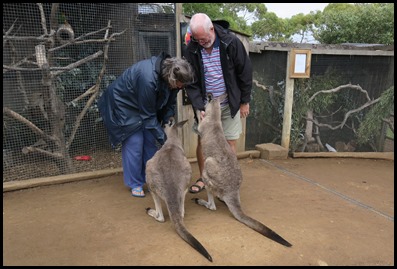 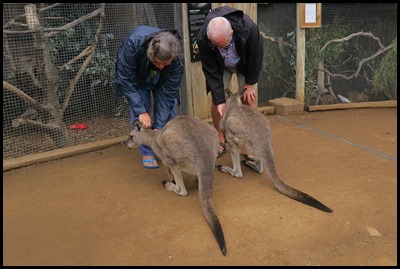 There we were. We chose a pair and
presented them with a handful of pellets. Arrrrr. 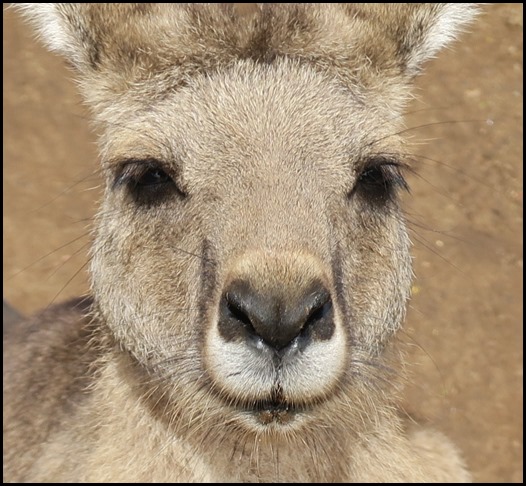 Bear melted at this
face. 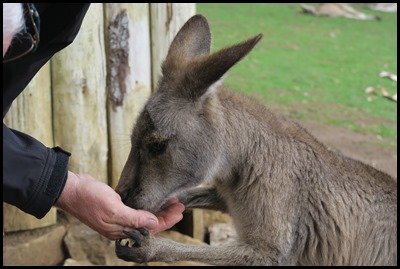 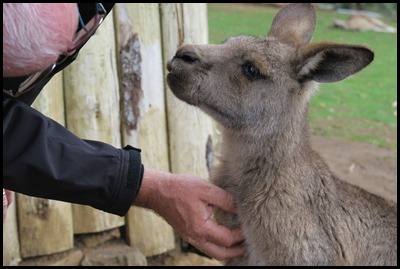 Hands held on so gently. Bear’s
putty. 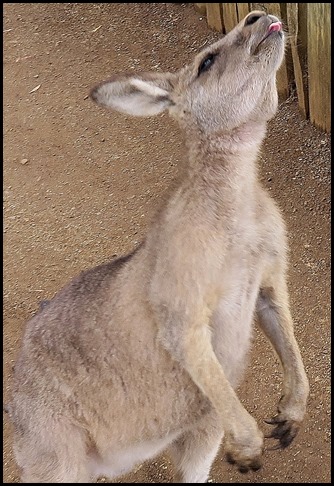 I’m falling for this
face. 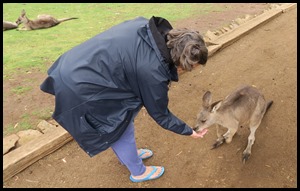
OK, I’m putty too. 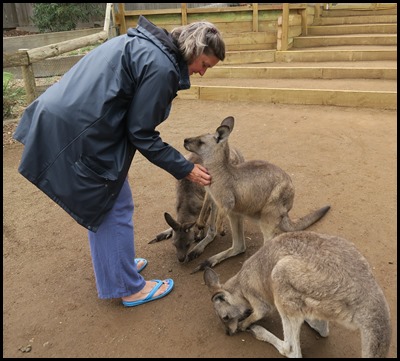 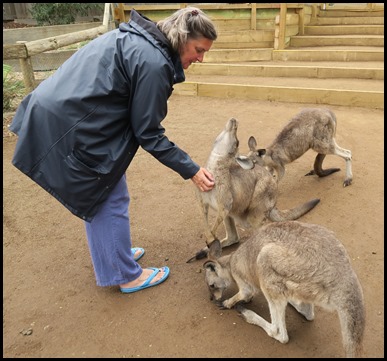 You know when you have got the scratching
just right, they suddenly flip their head back
and go all silly, eyes closed really enjoying the
petting. The word "kangaroo" derives from the Guugu
Yimithirr word gangurru, referring to grey
kangaroos. The name was first recorded as
"kanguru" on the 12th of July 1770 in an entry in the diary of Sir Joseph
Banks; this
occurred at the site of modern Cooktown,
on the banks of the Endeavour
River,
where HMS Endeavour under the command of Lieutenant James
Cook was beached for almost seven weeks to
repair damage sustained on the Great Barrier
Reef. Cook first referred to kangaroos in his
diary entry of the 4th of August. Guugu Yimithirr is the language of the people of the
area.
Kangaroos are often colloquially referred to as "roos". Male kangaroos are called bucks, boomers, jacks or old men; females are does, flyers or jills, and the young ones are joeys. The collective noun for kangaroos is a mob, troop or court, Bear likes gang, I like herd.
We could not get over the middle toe, this particular lady had a damaged right one. Their front paws splay flat on the ground, fourth nail the longest.
Sharing.
Sharing with a Cape goose.
Soundo.
The eastern grey kangaroo's fur is woolly and grey-brown in colour, and they have a small head with big ears. Their tail can grow up to 1.2 metres which is very helpful for balancing and standing up straight. An eastern grey kangaroo can live anywhere from fifteen to twenty years of age in the wild. A big male can measure up to 2.8 metres from his nose to the tip of his tail, and can weigh up to 66 kg. Females are much smaller only reaching approximately 32 kg. The highest ever recorded speed of any grey kangaroo was 64 kilometres per hour (40 mph) set by a large female, the same as a common dolphin, zebra or tiger....... Habitat: Eastern grey kangaroos can be found living on the open grassland, open woodland and forested coastal areas of eastern Australia and Tasmania. Diet: Eastern grey kangaroos are herbivores and predominately a grazing animal eating mainly shrubs and grass. They feed mostly at night and early in the morning. During the day, eastern grey kangaroos lie under shaded trees or in scrapes they have dug. This is also where they sleep.
The main paddock. We were amazed that we could walk up to the resting roos and they didn’t move. If we offered them food those interested would politely stand up, no barging or rushing. We asked later if they had had to be trained. “No, they just know if they bully no one will like them – no food, it’s a no brainer.”
Breeding: Breeding occurs throughout the year but more births occur in the warmer summer months. The female kangaroo is usually permanently pregnant, except on the day she gives birth; however, she has the ability to freeze the development of an embryo until the previous joey is able to leave the pouch. This is known as diapause, and will occur in times of drought and in areas with poor food sources. The composition of the milk produced by the mother varies according to the needs of the joey. In addition, the mother is able to produce two different kinds of milk simultaneously for the newborn and the older joey still in the pouch. Unusually, during a dry period, males will not produce sperm, and females will only conceive if there has been enough rain to produce a large quantity of green vegetation. Females take care of the young without any assistance from the males. Females sexually mature between 17 and 28 months while males mature at around 25 months. A joey is born thirty three to thirty eight days after his/her parents mate. The tiny embryonic kangaroo emerges from its mother's body and slowly climbs up her abdomen and into her pouch. When the joey is first born it weighs under a gram and is as tiny as fifteen millimetres, very much like a small, pink jellybean. Once born the joey will stay in its mum's pouch for up to eight months. At this age the joey will begin to start exploring and go for very short little hops around out of mum's pouch. The joey will still be able to fit into its mothers pouch until it is around one year old, but will only try getting back in when he is cold or scared. When the joey finally does becomes too big for mum's pouch she will refuse to let him in. By this stage, mum may already have another little joey suckling on her teat.
We watched this mum and joey, time for some play and then the joey suckled.
Mum was perfectly happy to accept feed from Bear. The question we posed – could the joey still fit in the pouch.
In, sorted and then grazing, cheeky chap.
Final hug time.
Favourite picture – please.
ALL IN ALL SUCH A GREAT EXPERIENCE I NEVER REALISED THEY COULD BE SO TAME |
